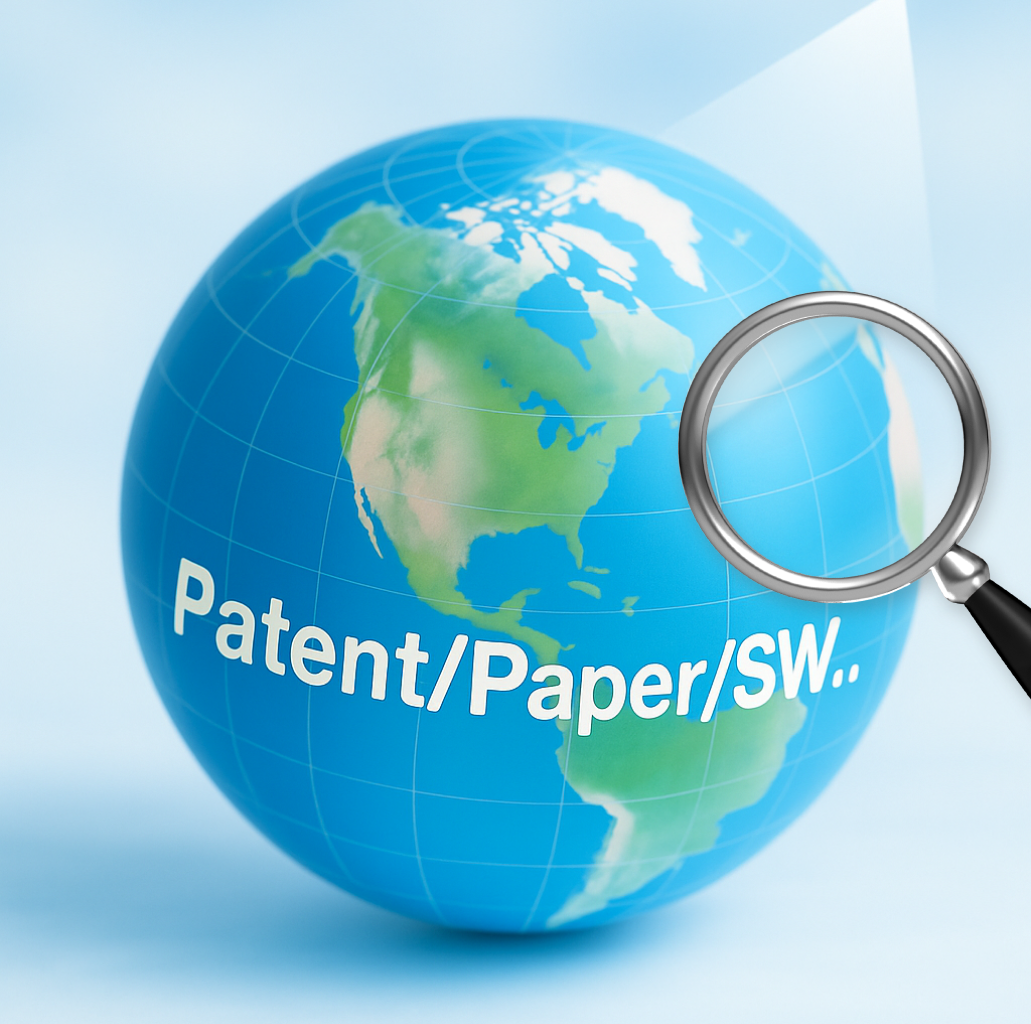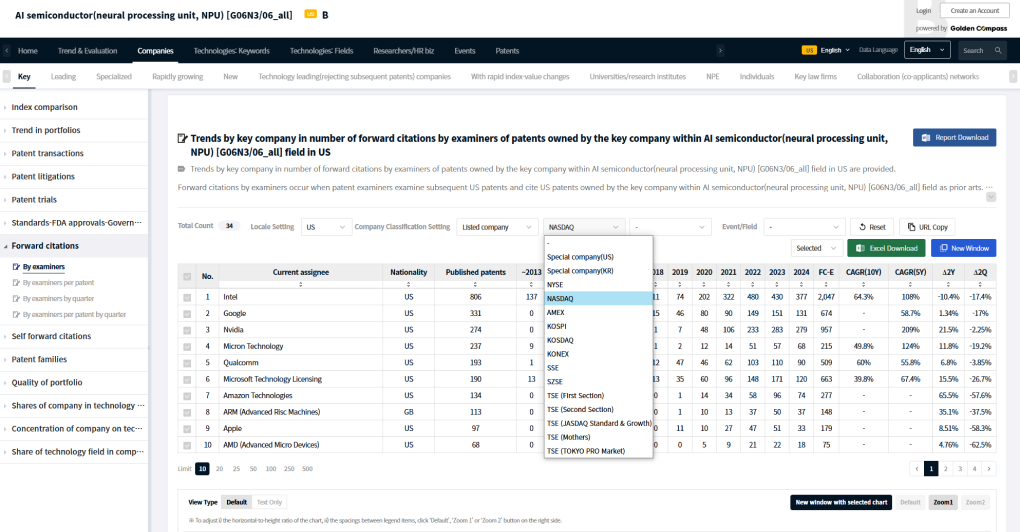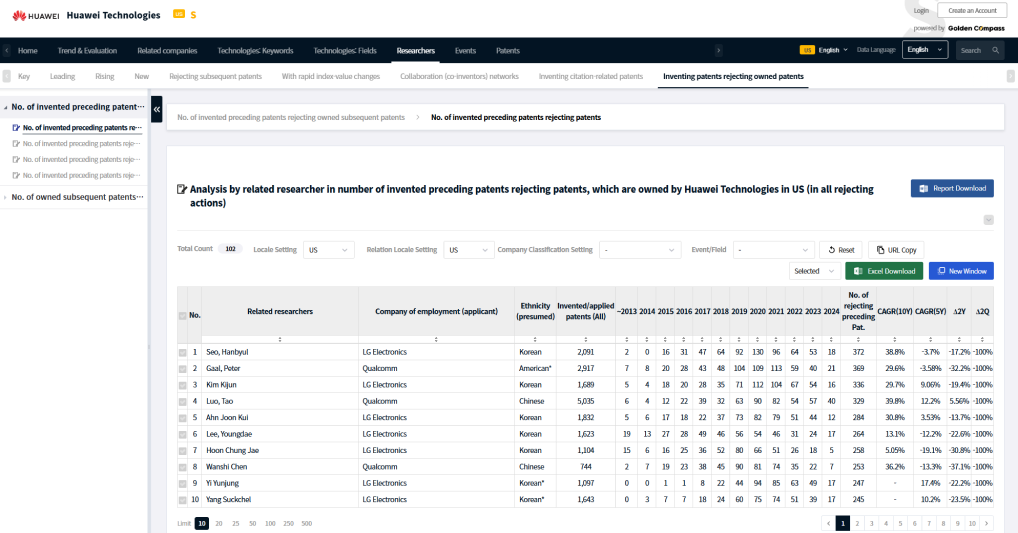Purpose: Technology trends, competitors, market leaders, M&A/investment (specialized companies), collaboration, risk (NPEs), etc.
Analyze metrics: No. of patents owned, No. of citations, No. of rejecting subsequent patents, No. of purchased patents, No. of patent suits/trials, quality, etc.
Technology fields: 260,000 CPCs/IPCs, 100,000 technical categories, 5 million keywords
Types of patent holders: Core companies, leading companies, specialized companies, rapidly-growing companies, new companies, subsequent-patent-rejecting companies, universities/research institutes, NPEs, individuals Technical competitiveness: No. of citations, No. of citations per patent, No. of rejecting subsequent patents, No. of rejecting subsequent patents per patent, etc.
Technical competitiveness: No. of citations, No. of citations per patent, No. of rejecting subsequent patents, No. of rejecting subsequent patents per patent, etc.
Analytics not only on individual companies in the technology field(example link), but also on the individual companies themselves(example link)

















